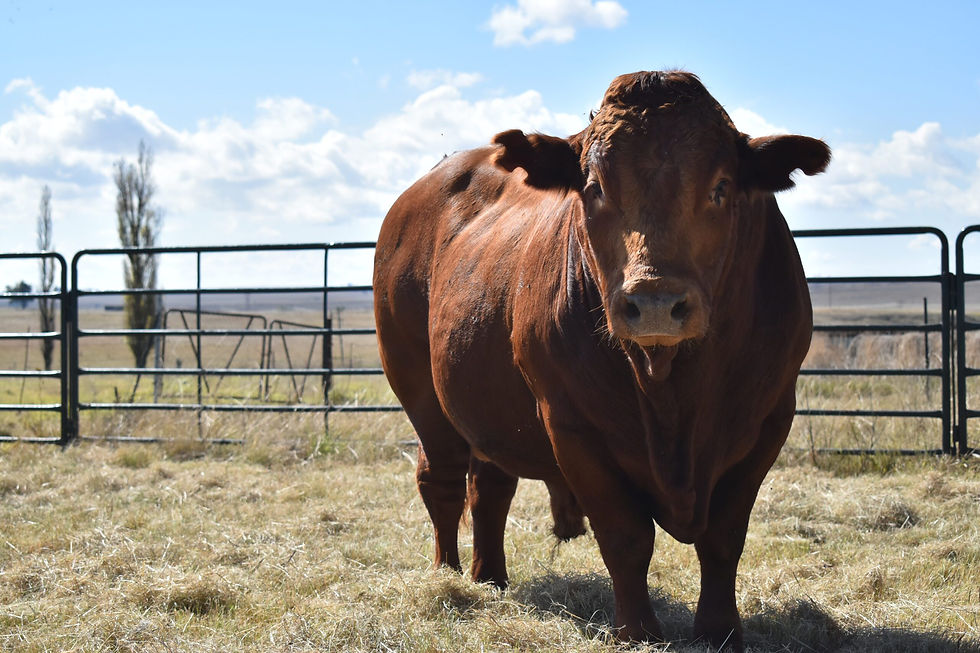TATTOOING OF CATTLE & GOATS – 2025
- Diccon Robinson
- Jun 4
- 3 min read
The proper identification of animals is essential for all aspects of efficient livestock production. It allows for the orderly proof and transfer of ownership and becomes more important in the case of stock theft.

Proper identification enables the producer to keep comprehensive records of management practices with a permanent identification system even if the ear tags have been removed.

Several systems of identification may be used, e.g., branding, ear tagging, ear notching and tattooing within the ear depending on what the individual farmers wish to apply. In cattle in Eswatini ear tagging is mandatory for traceability but not for goats.

There are two types of identification: permanent (Branding) and non-permanent (Ear Tagging). Identification within the beef herd requires visibility which is accomplished using ear tags. These are also used for goats which are usually smaller but not mandatory.
Tattooing is one method of identification that is permanent if done properly. However, it is not easily viewed but one of the easy ways of identifying stolen stock if the ear tag is removed. Tattooing requires a pair of pliers, numbers and/or letters and sharp, needlelike projections which piece the skin within the ear. The tattoo ink is forced into the punctures and remains visible after the puncture wounds heal. Tattooing is done on the ear and can easily be seen later when ear is cleaned for correct identification.

Getting started
you require
tattoo pliers
letters, numbers
black stove polish (ink) or green ink.
Letters and numbers should be 8 – 10mm in size. Always wash and disinfect letters and numbers after use. Very important.
Tattooing Procedure:
Step 1. Clean ear with alcohol and a soft cloth that the ear is clean of wax and dust.
Step 2. Apply generous amount of ink over the area to be tattooed, usually between the middle rib of the ear. Keep away from the hair around the edge of the ear. An area slightly larger than the tattoo pliers should be covered with ink.
Step 3. Hold the animal securely. After verifying the correct tattoo letters and number by punching it into a pierce of paper, position the pliers in the center of the ear between the ribs of cartilage and squeeze firmly. Avoid the ribs will prevent bleeding. Be sure to lift pliers out straight: as many tattoos have been ruined by scratches.
Step 4. Reapply ink again and rub in firmly into tattoo marks to assure a lasting tattoo. Old toothbrush may be used to help push the ink into the punctures
Step 5. Sanitize the tattoo kit between animals by spraying / rubbing alcohol on the pliers and individual tattoo pieces that have been used. Cleaning will minimize infection in the tattoo and should be done before and after each procedure.
Step 6. After several weeks check that the tattoo has become legible and made a permanent identification of your animal.
Tattooing of stock is best done when the calf or goat is a month old for permanent identification. Tattooing may be done at any time, however the younger you tattoo an animal the more legible the tattoo will be. The tattoo will grow as the animal gets older, making it easier to read. Don’t assume a purchased animal already has a tattoo in its ear, check as you are the new owner and it is your responsibility to ensure proper identification of your stock and that it is legible.
NB. Keep a record of all your animals with their tattoo numbers, sex and colour of the animal.
© 2025 Diccon Robinson. All rights reserved. This blog post on khubatraders.com is the intellectual property of Diccon Robinson. No part of this publication may be reproduced, distributed, or transmitted in any form or by any means, including photocopying, recording, or other electronic or mechanical methods, without the prior written permission of the author, except in the case of brief quotations embodied in critical reviews and certain other noncommercial uses permitted by copyright law. For permission requests, contact the author via khubatraders.com.





Comments